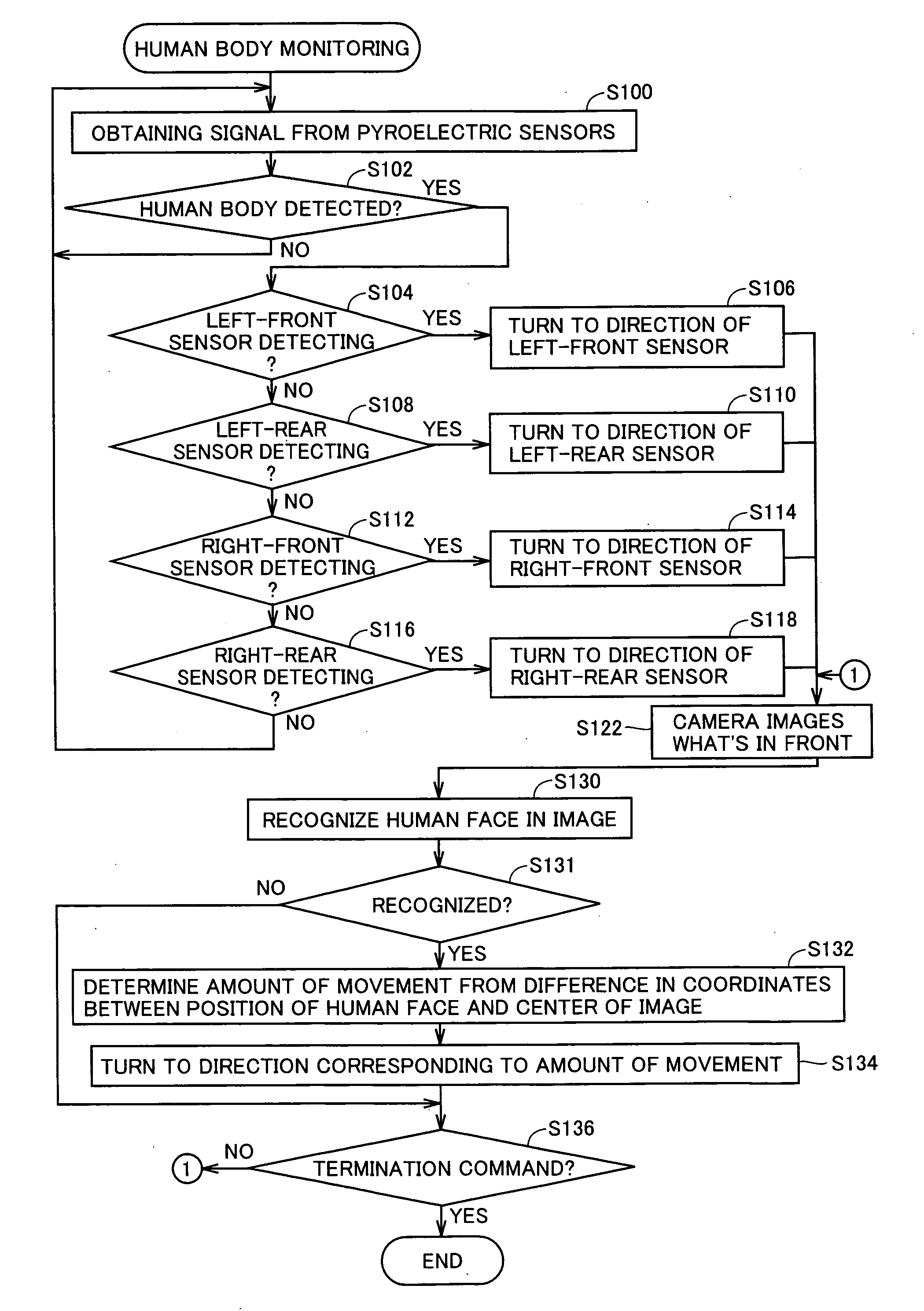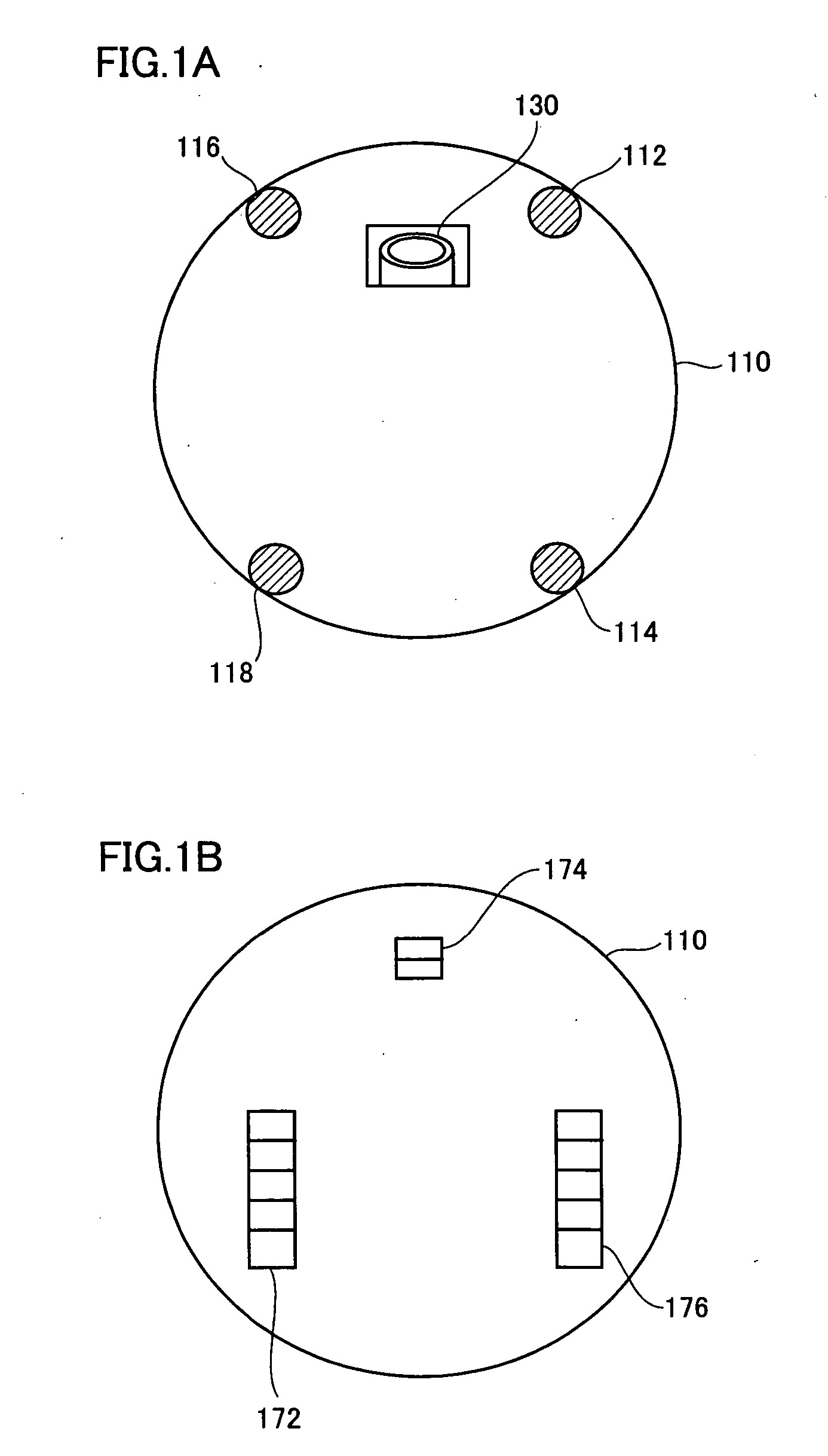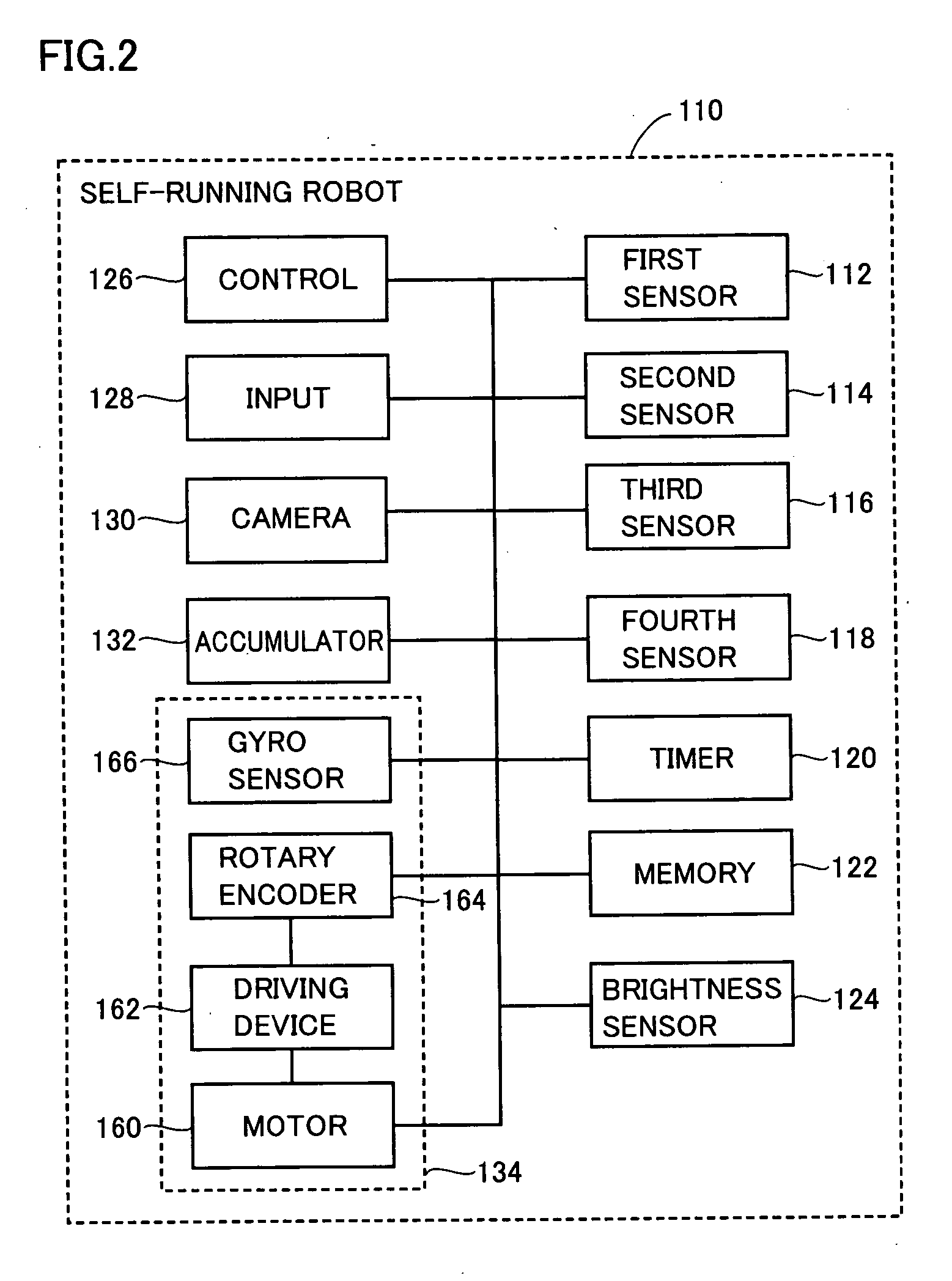Self-running robot
a self-running robot and robot technology, applied in the direction of conveyor counting, process and machine control, instruments, etc., can solve the problems of high manufacturing cost, inability to provide easy tracking and sensing of human movement, etc., and achieve the effect of simple arrangemen
- Summary
- Abstract
- Description
- Claims
- Application Information
AI Technical Summary
Benefits of technology
Problems solved by technology
Method used
Image
Examples
first embodiment
[0030] A self-running robot according to a first embodiment of the present invention is described below.
[0031] Referring to FIGS. 1A, 1B and 2, a self-running robot 110 according to the present embodiment includes a first sensor 112, a second sensor 114, a third sensor 116, a fourth sensor 118, a timer 120, a memory 122, a control unit 126, an input mechanism 128, a camera 130, an accumulator 132, and a running mechanism 134. FIGS. 1A and 1B show the external appearance of self-running robot 110 according to the present embodiment. Self-running robot 110 may be a disk-shaped robot that tracks and images an intruder in a user's home when the user is absent. FIG. 1A is a plan view and FIG. 1B is a bottom view of self-running robot 110. FIG. 2 is a control block diagram of self-running robot 110.
[0032] First to fourth sensors 112-118 may be pyroelectric sensors detecting the presence of a heat source (typically a human body) and outputting a signal. First sensor 112 is provided on th...
second embodiment
[0052] A self-running robot according to a second embodiment of the present invention will be described below.
[0053] Self-running robot 110 according to the present embodiment has the same hardware configuration as the first embodiment described above and has the same functions as well. Accordingly, a detailed description thereof will not be repeated.
[0054] Referring to FIG. 4, a program executed on self-running robot 110 according to the present embodiment performs the following operations for imaging an intruder. Note that in the flowchart shown in FIG. 4, those operations that have been discussed above referring to FIG. 3 are labeled with the same step numbers and are the identical operations. Accordingly, a detailed description thereof will not be repeated.
[0055] At S130, control unit 126 recognizes a human face in the image taken by camera 130. In the present embodiment, those of the pixels are extracted having a difference in tone from the surrounding pixels larger than a t...
third embodiment
[0068] A self-running robot according to a third embodiment of the present invention will be described below.
[0069] Referring to FIG. 5, a self-running robot 210 according to the present embodiment includes a first sensor 112, a second sensor 114, a third sensor 116, a fourth sensor 118, a timer 120, a memory 232, a control unit 126, an input mechanism 128, a complementary metal-oxide-semiconductor (CMOS) camera 240, an accumulator 132, and a running mechanism 134.
[0070] Memory 232 stores similar information to that stored in memory 122 of the first embodiment and, in addition, a data table indicating directions to which self-running robot 210 is to turn (hereinafter referred to as “data table”). The directions shown in FIG. 6 are those as viewed by a person opposite the front side of self-running robot 210. Referring to FIG. 6, the data table contains data indicating different combinations of detection and non-detection of a human body by the sensors and data indicating the direc...
PUM
 Login to View More
Login to View More Abstract
Description
Claims
Application Information
 Login to View More
Login to View More - R&D
- Intellectual Property
- Life Sciences
- Materials
- Tech Scout
- Unparalleled Data Quality
- Higher Quality Content
- 60% Fewer Hallucinations
Browse by: Latest US Patents, China's latest patents, Technical Efficacy Thesaurus, Application Domain, Technology Topic, Popular Technical Reports.
© 2025 PatSnap. All rights reserved.Legal|Privacy policy|Modern Slavery Act Transparency Statement|Sitemap|About US| Contact US: help@patsnap.com



